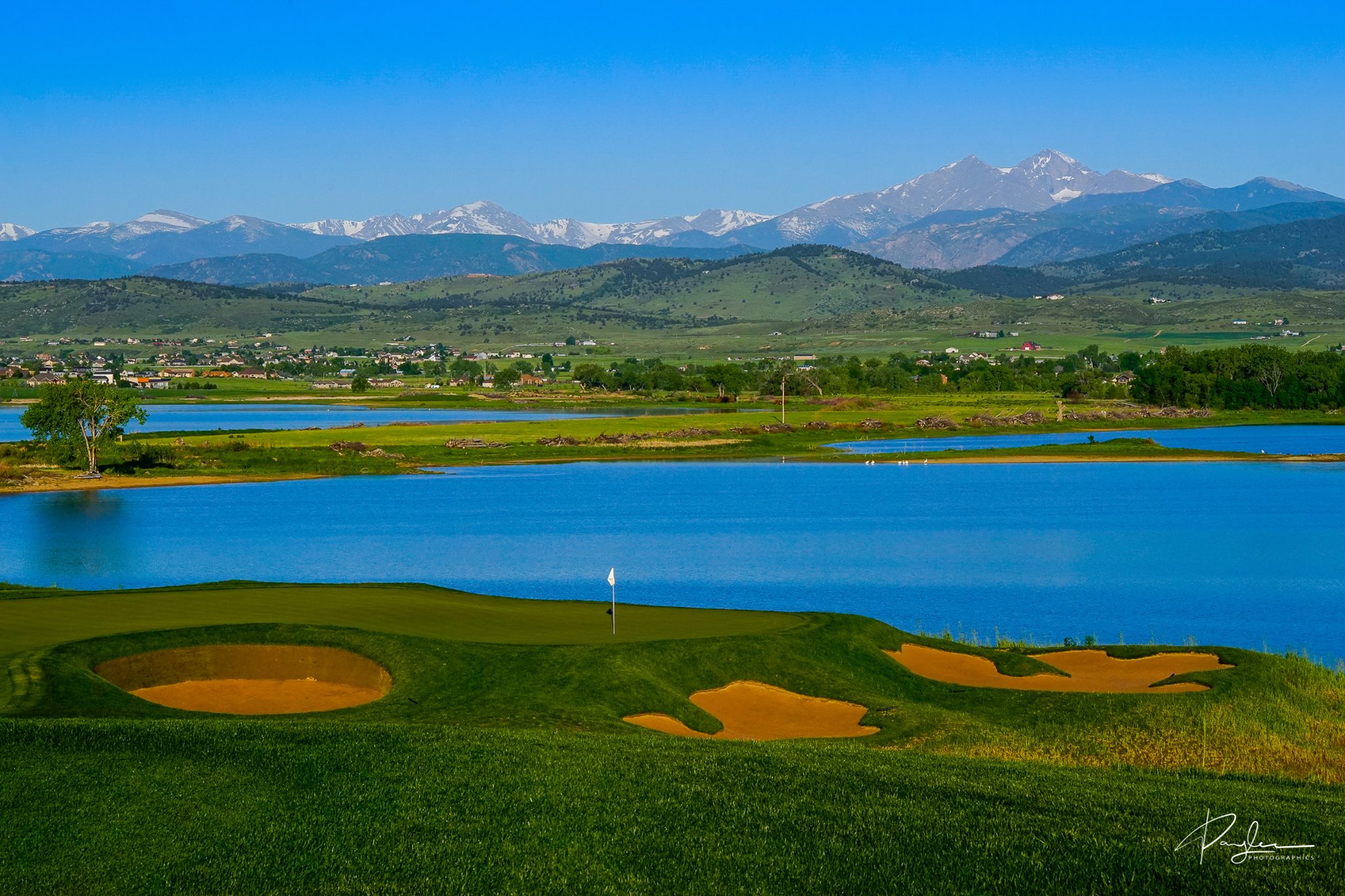
The land in Colorado between Denver and Fort Collins on the Front Range of the Rocky Mountains is mostly rolling foothills on the edge of the Great Plains. It’s here that golf course designer Art Schaupeter, a University of Colorado grad, routed TPC Colorado, the newest facility in the TPC Network of courses and a course made for the modern professional game.
Schaupeter worked under designer Keith Foster for eight years so he understands courses on a grand scale and getting the most out of a big-shouldered piece of property. Located within the Heron Lakes development to the north west of the town of Berthoud, TPC Colorado is situated 18 miles south of Fort Collins and 49 miles north of Denver.
TPC Colorado is the host of The Ascendant presented by Blue on the Korn Ferry Tour from July 13-16.
Breaking down TPC Colorado
Everything is large at TPC Colorado, which plays as a par-72 and measures at 7,991 yards from its back set of tees as it skirts along the eastern edge of Lonetree Reservoir. Even though it’s set at just under a mile of elevation, the course plays every inch of that considerable length because of the handful of uphill approaches Schaupeter worked into the design.
When it was unveiled in 2019, TPC Colorado was the first new course to open in the state in more than a decade. The lion’s share of the discussion about the track in the runup to its debut was its loooong holes, most notably the 773-yard (!) par-5 13th and the 531-yard all-uphill closing hole.
While the course is long (and, at times, is surprisingly wet), it is very playable if you take on the correct set of tees for your game – there are six to choose from – and play with a little course management.
TPC Colorado was designed to mimic the style of a Scottish links, with its out-and-back routing that begins and ends at the facility’s expansive and uber-plush clubhouse atop a hill.
On top of the length and the water and the elevation change, golfers are also challenged with deep, revetted bunkers throughout, some of which are very large (like the 13th) and others that are like small pots.
The round kicks off with a bang with a 624-yard par-5 that is relatively flat after the tee shot. It’s followed by a 238-yard par-3 that features an all-or-nothing carry off the tee to a narrow putting surface that’s higher on the left and surrounded on three sides by McNeil Reservoir.
The 395-yard third is a par-4 that doglegs to the left around the water and gives the golfer plenty of choices. If the wind is at your back, and you can keep your ball in the air long enough, you can try to drive the green.

The toughest hole at TPC Colorado is usually the 624-yard, par-5 fifth, whose fairway moves in an “S” shape and is pockmarked with deep, troublesome bunkers at the tops of the turns that dictate club selection and the attack angle. The hole ends at a green that is elevated and in the shape of a triangle.
The par-3 eighth is a remarkable hole, with the 194 yards from tee to green surrounded on both sides and beyond the putting surface by water. But you won’t realize until you’re walking toward the green that the large trees lining the hole are actually growing straight out of the water.
The 11th hole plays at 496 yards from the back and gives the golfer a chance to get his or her driver going before attacking the aforementioned giant and notorious 13th, the longest par-5 played in professional golf.
After a cracking drive, players have to make the decision to go-deep with a fairway metal over the hole’s 108-yard “Hell Bunker” that protects the left side of the fairway or lay up short of the massive bunker and simply leave a really long shot for their approach into the green.
The par-3 16th begins at the clubhouse and is the start of a wonderful three-hole closing stretch. It’s called “Center Stage” and plays 140 yards downhill to an island green that’s set at the edge of the reservoir. There are natural hazards and pot bunkers to catch anything short and sand and tall fescue protecting the back side of the island to catch the shot that is a bit too aggressive.
The 17th and closing holes, par-4s of 495 and 531 yards, respectively, are parallel holes with a connecting fairway to the left of the optimal landing area.
TPC Colorado gives the golfer options of play to discover on each hole and the opportunity to always play to their own strengths and desires, challenging for birdies where they feel confident and playing safely where they need.
The views on the course are amazing, with Longs Peak hovering over the routing, and the design is fun. At TPC Colorado most of the par-4 holes were designed with speed slots to help shorten the carded length for drives played aggressively.
It’s a challenging golf course with fast fairways and greens and holes with false front and collection areas that require short game precision to score. The layout allows golfers to become completely submerged in the hole they’re playing at the time, with little to no interference from golfers playing nearby holes.
If TPC Colorado is the future of golf at the highest level, we like where the game is going…and once you play it, you will, too.

